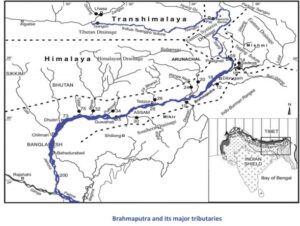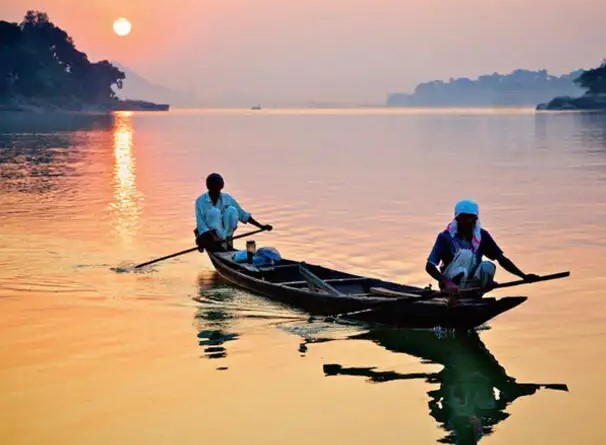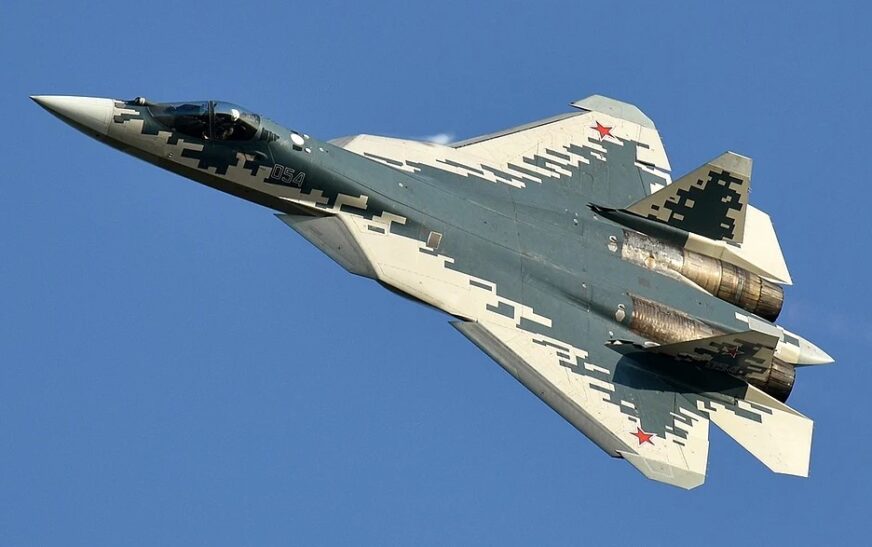BRAHMAPUTRA & CHINESE THREAT
SARASIJ MAJUMDER

As India suspended Indus Water Treaty, China has tried to threaten India.
“Don’t do unto others what you don’t want done to you,” warned Victor Zhikai Gao, a senior Chinese policy advisor, hinting at Beijing’s strategic leverage over the Brahmaputra (?!?!?!)— a river flows through India’s Arunachal Pradesh, and Assam.
An article in Business Today shared a cocktail of some ‘Half Truths’ (data part), and mixed it with imaginary Dooms Day Analysis, on 31s May, 2025.
That is OK—those journalists have to make a living, even by XXXX! But some people are sharing it in social media as an ‘EXPERT REVIEW’. That needs to be contested, and corrected.
I will try to evaluate the threat. I am a ‘QUALIFIED’ Civil Engineer, with Post Graduation, having over 55 years of experience, 30 years of which was in the best Engineering Company of India, of my time.
Beijing’s ambition: A $137 billion hydropower mega-project in Tibet’s Merdog County, with a projected output of 60 GW. Its location, is just 30 km from India’s border. Quantity of water is not effective in Power Generation. It is ‘HEAD’-i.e. difference of height of the riverbed contributes to power generation. The River drops from 10,000ft. from Tibetan Plateau to 500 ft, when it enters in plains of India. Hence—China can generate huge power at little cost, almost throughout the year. That is their good luck.
But their this project doesn’t affect INDIA at all.
Geography of Tibet: (Not taught much in schools of India)
Tibet is a rain shadow region. The Himalayas act as a barrier to monsoon clouds, causing a significant drop in precipitation on the leeward side of the mountain range, which includes Tibet. This leads to a cold desert-like dry climate on the northern side of the mountain range, i.e. in Tibet.
There are many parts of Tibet where there is little to no snow throughout most of the winter months, with only the coldest months bringing some snow to the lower altitude areas. However, for some parts of Tibet, the snows can start as early as November, and can last until the spring comes in April.
Summer in Tibet, while warm, is also their so called rainy season, especially from late June to September. The rainy season brings some clouds, but the rain is often localized and may fall at night or in short afternoon showers. Temperatures in the higher elevations remain cool, even in summer.
And none of these, contribute much to flow in the River, in its Tibetan segment.
Origin and Course:
The Brahmaputra originates from the Chemayungdung glacier near the Kailash range in Tibet, at an elevation of 5,150 meters, approximately at 31’30’N and 82’0’E, some 145 km from Parkha, an important trade centre between lake Mansarovar and Mount Kailas. It has a long course through the dry and flat region of southern Tibet, known as the River Yarlung Tsangpo before it breaks through the Himalayas through a Gorge, near the Namcha Barwa peak, before entering India through Arunachal Pradesh.
Within India, it flows down further through Assam and then enters Bangladesh.
Finally, it merges with the Padma and become Meghna river, forming the largest delta in the world, the Sundarbans, before flowing into the Bay of Bengal.
Tributaries:
The Brahmaputra is joined by numerous tributaries along its course, both from the left and right banks, and all are in India. Refer image.
Main Tributaries: Lohit, Dibang, Subansiri, Manas, Teesta, Burhi, Dihing, Disang, Dikhu, Kopili, Amochu, Raidak, Sankosh, Mans, Bhareli, Dibang and Luhit.
Brahmaputra River, being one of the largest rivers in the world, with its basin covering areas in Tibet, China, India and Bangladesh. Several tributaries in Tibet are derived partly from a low range between the main Himalayas. The total length of the river from its source in southwestern Tibet to the mouth in the bay of Bengal is about 2,850 km (including Meghna up to the mouth). Within Bangladesh territory, Brahmaputra-Jamuna (of Bangladesh) is 276 km long, of which Brahmaputra is only 69 km.
Before Namcha Barwa, the flow is meagre 2,000–3,000 cusecs, but increases to 20,000 -30,000 Cusecs once it is in in India, at monsoon season, due to rains in North East states caused by South-West monsoon in India. Our North-East region gets maximum rain during monsoon, and this is most rain affected zone of India.
This Rain Water, Going Into The River, Can’t Be Stopped By China.
The catchment of this mighty river is 5,83,000 sq. km of which about 47,000 sq. km lies in Bangladesh. The catchments area of Brahmaputra in Tibet is 2, 93,000 Sq. km. The rest 2,43,000 Sq.km. is in India, which contributes to its 90%+ of water flow in India. The river is braided.
Four main tributary systems are Dudhkumar, Dharla, Tista and the Karatoya-Atrai system. The first three rivers are flashy in nature, rising from the steep catchment on the southern side of the Himalayas between Darjeeling in India, and Bhutan. Old Brahmaputra was the longest and has actually changed the course to the present Brahmaputra some 200 years ago. The switch took place after the earthquake and catastrophic flood in 1787.
During the monsoon the Brahmaputra discharges a large volume of water and at the same time brings in huge amounts of sediments. Most of this flows down. Some are deposited in the FLOOD PLAINS in Assam, very suitable for agriculture.
THAT CHINA WILL TRANSFER WATER FROM BRAHMAPUTRA IS AN EMPTY THREAT. IT WILL NEITHER EFFECT BRAHMAPUTRA’S FLOW IN INDIA, NOR CAUSE ANY WATER PROBLEM TO INDIA.
Moreover, India is building major Dams in Brahmaputra, and its tributaries. Those huge reservoirs will stabilize the flow of this mighty river. These should have been done long back.
While we will do some power generation, our main objective is holding monsoon water for Flood Control, irrigation in summer month, and stabilize the flow through the river channel.
ADDITIONAL SOURCES: –
- TOI—June8,2025.
- https://waterresources.assam.gov.in/portlet-innerpage/brahmaputra-river-system.
- Image: From Google.






